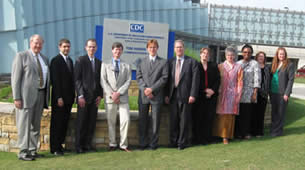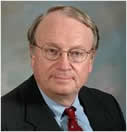History
- The Beginning
- Rochester Deaf Health Task Force (2003-2004)
- Deaf Health Community Committee (2005-2014)
- Rochester Community Support
The Beginning

- Deepen its partnership with individuals and organizations from the Deaf community in Rochester and around the nation
- Create new techniques for translating English-language public health surveys into a video-based form that is culturally and linguistically appropriate for Deaf people
- Develop a computerized survey on a touch-screen computer using the newly-translated survey questions
- Conduct the nation’s first-ever sign language-based health risk survey with Deaf communities
- Compare health status in the Deaf community with comparable hearing populations
- Design the Center’s offices and meeting rooms to be “Deaf-friendly.” Deep-blue walls with matching curtains maximize visual contrast for sign language communication and minimize glare from windows. Circular seating arrangements provide unhindered sight lines for meetings. Meeting rooms are outfitted with assistive listening devices for people with hearing loss. Videophones enable communication with the rest of the world.
Rochester Deaf Health Task Force (2003-2004)
Prior to the establishment of the RPRC:NCDHR, Dr. Steven Barnett of the University of Rochester Medical Center (URMC), along with the Finger Lakes Health Systems Agency, convened a Deaf Health Task Force in December 2003 to examine health and healthcare issues faced by Deaf and hard of hearing Rochester residents. This task force was made possible through a cooperative agreement between the CDC and the Association of Teachers of Preventive Medicine. Nearly 25 Deaf and hearing individuals representing various organizations met and produced a list of recommendations.
Rochester Deaf Health Task Force Report
Deaf Health Community Committee (2005-2014)
Several members of the Rochester Deaf Health Task Force subsequently joined the Deaf Health Community Committee (DHCC) in January of 2005. The purpose of the DHCC was to help connect RPRC:NCDHR and the local Deaf community, and help ensure that Deaf perspectives, values, and priorities informed RPRC:NCDHR research and other activities. To guide this, DHCC developed its own vision and mission statements and written governance guidelines and DHCC leadership were full members of the RPRC:NCDHR Executive Committee. DHCC members and RPRC:NCDHR faculty and staff worked together to adapt a program on research ethics to be language accessible and culturally appropriate for use with Deaf people, and DHCC members became certified in research ethics. DHCC members met monthly with members of the RPRC:NCDHR research team, and advised student projects with RPRC:NCDHR. Some DHCC members worked together with RPRC:NCDHR faculty and staff to develop and conduct their own research and public health projects.
Rochester Community Support
The initial grant application would not have been successful without the support of local Deaf community resources, such as the following:
- The Rochester Deaf Community, featuring perhaps the highest concentration of culturally Deaf people in the country.
- The Deaf Wellness Center, a behavioral health clinic based in the Department of Psychiatry at the University of Rochester Medical Center
- Lifetime Health, a local outpatient clinic which runs a Deaf Health clinic featuring sign language-fluent providers with nearly 700 Deaf patients
- The National Technical Institute for the Deaf (NTID) at Rochester Institute of Technology, the world’s largest technical college for Deaf students
- Rochester School for the Deaf, a longstanding primary and secondary educational institution for Deaf students in the City of Rochester
- Strong Interpreter Services, featuring the most comprehensive sign language interpreting service in the Rochester area and a model provider of such services for the world
Founding Leadership-2004
 Founding Director, Dr. Thomas A. Pearson, served as the founding Program Director and Principal Investigator for RPRC:NCDHR, from 2004-2013.
Founding Director, Dr. Thomas A. Pearson, served as the founding Program Director and Principal Investigator for RPRC:NCDHR, from 2004-2013.
The National Technical Institute for the Deaf (NTID) at Rochester Institute of Technology (RIT) entered into a close relationship with RPRC:NCDHR, providing faculty with expertise in technologies for supporting communication with Deaf people. Dr. James DeCaro, former Dean and president of NTID, helped to maintain our strong partnership between RIT and the UR.
RPRC:NCDHR also established an External Advisory Committee (EAC) made up of notable leaders in the national Deaf community. Dr. Alan Hurwitz, former President of Gallaudet University, served as the first chair of the EAC.
Deaf Health Survey 2008
RPRC:NCDHR’s 2004-2009 core research project was to develop a state-of-the-art sign language video-based survey (Deaf Health Survey 2008) that is based upon standard English language health and risk behavior surveys. Similar surveys are routinely conducted across the country with the general population by means of telephone calls or written English surveys by state and local health departments, school districts and colleges. These data, along with other health statistics, help public health officials find ways to improve the health of their citizens. Telephone surveys and written surveys, however, are inaccessible or inappropriate for Deaf people. Therefore, little or no data are available that describe the health status of Deaf people.
RPRC:NCDHR’s Deaf Health Survey 2008, in contrast, was designed to be culturally and linguistically accessible to the Deaf community. RPRC:NCDHR developed and refined new techniques to translate English into American Sign Language (ASL) or English based sign language and to conduct back translations for accuracy. Survey takers have the choices of video in ASL or English-based sign language, to turn captioning on or off, and to choose between different sign language “models" in order to suit their preferences (e.g. race, age, gender).
Over 300 Deaf adults from the Greater Rochester (NY) area took the survey during the summer of 2008. Grant applications to the CDC were due in late September of 2008. The CDC required that in the next five year period, Prevention Research Centers (PRCs) focus on interventions to promote health in their partner communities. During a series of town hall meetings, research findings from the Deaf Health Survey 2008 were shared and ideas were solicited for the new grant cycle. Three community health priorities were identified based on findings. Members of the Deaf community and the DHCC recommended that the next RPRC:NCDHR 5-year project should focus on research to reduce obesity. The new project, called “Deaf Weight Wise”, involved taking an existing program to help people lose weight and be more active, and adapt it for the Deaf community. The existing program, developed by the University of North Carolina at Chapel Hill PRC, has been shown to be effective there, and RPRC:NCDHR has adapted it for use with the Rochester Deaf community.
Center Logo

The RPRC:NCDHR logo, which was created by a local Deaf artist, reflects two key components of the mission of the Center: (1) health and (2) a focus on the culturally Deaf community. This contemporary logo design shows a person signing, with arms extending around, and above the head. The solid circles at the end of this person's arms represents closed fists, indicating the sign for "health". The fact that this person's arms occupies space above them is indicative of enthusiasm and being in good health.
